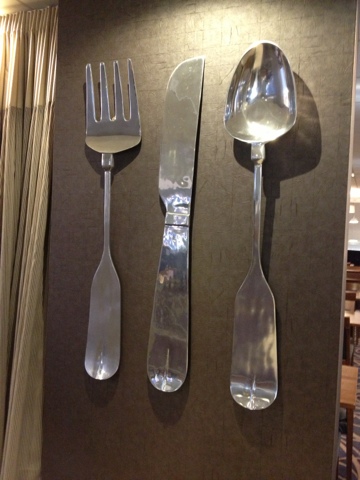While tidying up my last post on that Tesco acquisition of Giraffe, I was surprised to note the backlash being meted out to the restaurant chain's founders, reducing Juliette Joffe to tears of despair as she defended the move in emails from 'appalled Giraffe loyalists' according to this article in the FT.
And, oh boy is there gnashing of teeth in the comments section at the end of articles such as this. So much so, I'm surprised they're not calling on our newly-annointedDear Leader Pontiff to perform an exorcism on the Tesco Board of Directors to reveal which one of them is in fact the Devil incarnate. "Calm down Dear!" as ol' Winner used to say. (I do miss him, oddly enough.)
I agree there is a lot of disdain for Tesco, and that is an issue for them to work through if they are to rebuild the nation's trust in their brand, but to take out such anger on hard-working risk-taking entrepreneurs like the Joffes - who simple made a VERY smart business decision - is just plain silly.
From what I can see, they dared to dream and took a restaurant idea from a holiday napkin through to realising a £25m return on investment within just 15 years. That sounds like the kind of opportunity most people would snap your hand off for. Why shouldn't they sell to the highest bidder? And more importantly, what business is it of ours to berate them for it? After all, they have said they're staying on to oversee the expansion. At least wait and see.
In response to my previous piece, the point was put to me this morning on Twitter that this might be a great deal for Tesco, but it's not so great for the consumer. I agree with the sentiment and certainly in this case, time will tell. For this deal to work for you and me, the Tesco Board should leave the Giraffe operation in the capable hands of the restaurant operators who started it in the first place.
If anything the Board needs to keep a laser-like focus on the wider issue of Tesco's attrocious brand perception with the general public. I'm sorry, but A5 leaflets saying you're changing while STILL pulling products is not good enough. The company needs to get back to basics in delivering terrific customer service while concentrating on getting the supply chain, human resource and core business values right back to the top of the agenda. If you are going to turn the brand around, then do your marketing team a favour and work from the premise that you can't polish a turd.
To Juliette and Russel Joffe, I say Congratulations to you both. Celebrate the success, persevere with the plan and ignore the spitefulness. After all.. haters gonna hate.
And, oh boy is there gnashing of teeth in the comments section at the end of articles such as this. So much so, I'm surprised they're not calling on our newly-annointed
I agree there is a lot of disdain for Tesco, and that is an issue for them to work through if they are to rebuild the nation's trust in their brand, but to take out such anger on hard-working risk-taking entrepreneurs like the Joffes - who simple made a VERY smart business decision - is just plain silly.
From what I can see, they dared to dream and took a restaurant idea from a holiday napkin through to realising a £25m return on investment within just 15 years. That sounds like the kind of opportunity most people would snap your hand off for. Why shouldn't they sell to the highest bidder? And more importantly, what business is it of ours to berate them for it? After all, they have said they're staying on to oversee the expansion. At least wait and see.
@mykitchensync great reasons for Tesco - not the consumer. Hunger for profit driven by giants corps = horsemeat!
— Michele Greenhalgh (@Mgreenhalgh1) March 15, 2013
In response to my previous piece, the point was put to me this morning on Twitter that this might be a great deal for Tesco, but it's not so great for the consumer. I agree with the sentiment and certainly in this case, time will tell. For this deal to work for you and me, the Tesco Board should leave the Giraffe operation in the capable hands of the restaurant operators who started it in the first place.
 |
| Selling value while ignoring values |
To Juliette and Russel Joffe, I say Congratulations to you both. Celebrate the success, persevere with the plan and ignore the spitefulness. After all.. haters gonna hate.































